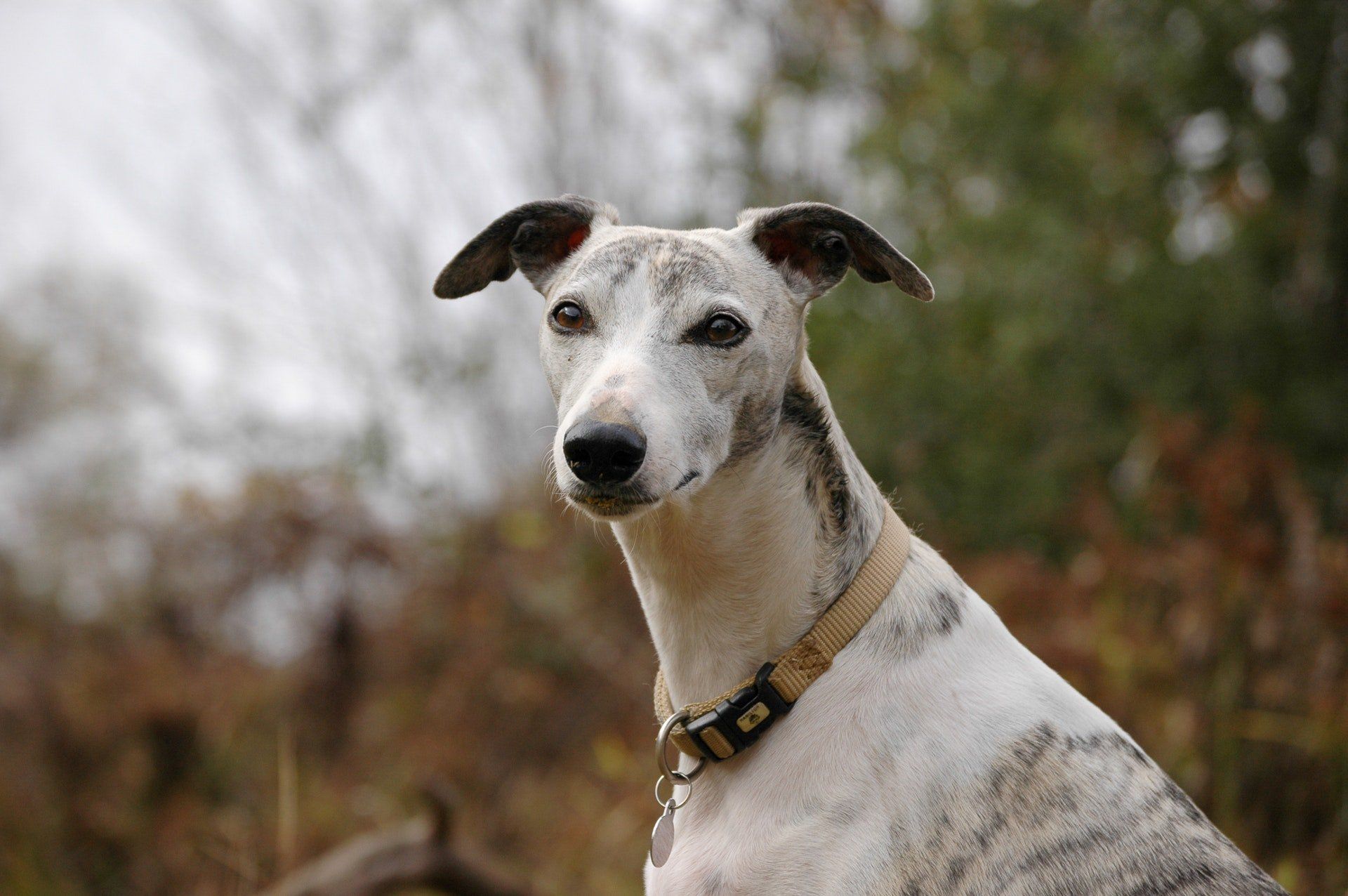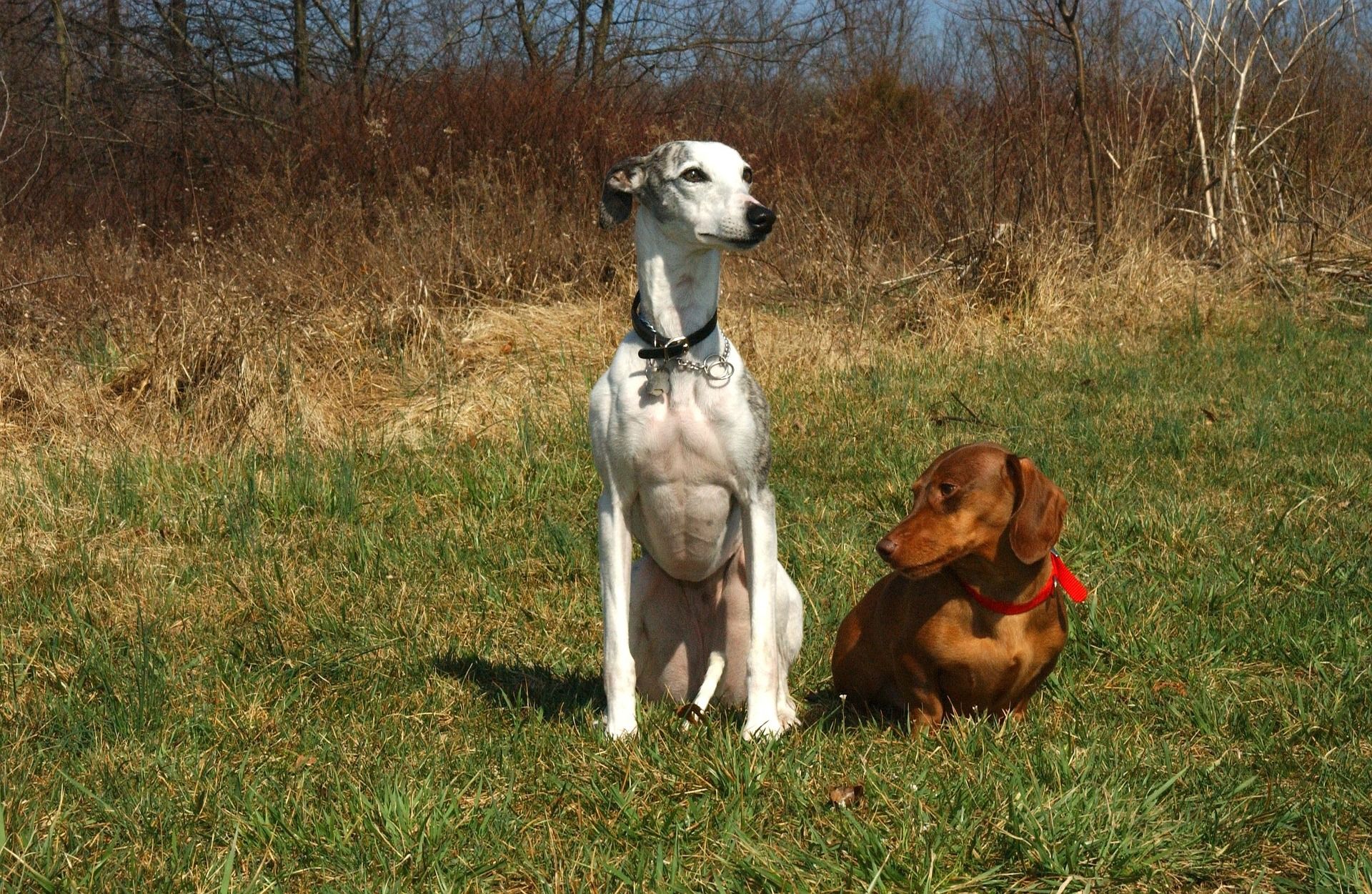Are whippets aggressive?

Table of Contents
Are Whippets aggressive?
Whippets are not biters or snappers. Breed characteristics indicate that they are easy to handle though they get very excited when while running around. They require close human contact. They are good with children and they tolerate visitors well.
This breed can be wary of strangers, but towards its owners, the Whippet shows unswerving loyalty.
Even though they are generally good with other dogs, Whippets have a strong hunting instinct and love to chase cats and small animals if given the chance.
It should not be left unsupervised with other family pets such as rabbits on guinea pigs. However, it will tolerate, or at least ignore, a household cat if the two were raised together.
What is aggressive behaviour?
Aggressive behaviour is a complex topic.
Any attacks, attempted attacks, or threats of attack by a dog to another dog or person is considered aggressive behaviour.
What are the common signs of aggression?
Attack for dogs means bites.
Attempted attack include behaviours that would be attacks if successful. Snapping for instance might qualify as an attempted attack even though in most cases it’s often just a threat of attack.
Any communication signal that predicts an attack will occur unless the dog gets what they want qualifies as a threat of attack. Usually, a dog does this to increase the distance between themselves and the other dog or person. Typically, a threat of attack is characterized by:
- Whining, barking or growling
- Snarling
- Lunging
- Tugging at the leash to reach the other dog or person
- Other behaviours include hard-staring, raised hackles, a stiff tail held up high or ears pointed forward. However, this behaviours are also associated with other situations such as general arousal or stress.
Aggressive behaviour is easy to spot when you see it.
What causes aggressive behaviour?
In dogs, even if breeds and genetic makeup have the tendency to influence aggressive behaviours, most aggression is adaptive—it is just behaviour obeying the same rules of as all other behaviours.
Like all behaviour, aggression occurs because it is effective in one of two goals:
- It allows the dog to gain access to something
- It allows the dog to avoid or escape something
Aggression in dogs may be influenced by factors such as:
- Genetic predisposition
- Early influence
- Maturation
- Sex
- Age
- Size
- Hormonal issues
- Psychological state
- External stimuli
What are the common kinds/types of aggression? How to remedy aggression
Aggression in dogs is classified according to a classification system based on patterns of behaviour and the causes of such behaviour. According to that system, the kinds or types of aggression are as follows:
Type #1 — Dominance-related aggression
This is the most common form of aggression in all canines. It is rooted in a power struggle. This occurs because dogs consider persons a member of their pack. This is the most dreaded form of aggression from the point of view of human and dog safety. It is also the most commonly encountered.
Some remedies for dominance-related aggression
- Avoiding actions that can provoke attack
- Using passive behaviour modification techniques such as resisting rewarding unacceptable behaviour and praising good behaviour
- Less aggressive ways such as desensitization and counter-conditioning
Type #2 — Territorial aggression
This kind of aggression happens when the dog wants to defend his area(home, room, yard etc.), owner, or a fellow pack member. Dogs display territorial aggression towards approaching animals or people outside of the pack.
Some remedies for territorial aggression
The best way to territorial aggression is by early socialization and good control over your dog. Teach your dog to sit and accept a reward every time a new person comes home.
You can also reduce his fear and anxiety of strangers by having a large number of people come over while he is still a puppy.
Type #3 — Fear-induced aggression
This aggression is build up by unpleasant experiences with people or animals that make your dog frightened. Fearfulness is often a result of improper secondary socialization. It is often the result of some combination of other forms such ad dominance, maternal etc.
The remedy for fear-induced aggression
Behavioural therapy by a trained professional is the recommended approach.
Type #4 — Maternal aggression
Maternal aggression is aimed at anyone approaching a female with puppies or in false pregnancy. The dog can turn aggressive protecting the nesting areas where the puppies would have been born. After the puppies are weaned and the dog is spayed, the problem disappears.
Remedy for maternal aggression
Good control over the dog with highly motivating rewards can train them to accept anyone approaching.
Type #5 — Redirected aggression
Occurs when a dog redirects his aggression from a particular object or person to another e.g. when a door barks at the door and then redirects that anger to the owner who pulls him on the leash. Redirecting is the result of certain other forms of aggression so it’s important to identify and remedy the root cause.
Remedy for redirected aggression
The goal is to remove the dog from the aggressive state by distracting his attention. To prevent the aggression, avoid exposing them to the cause again.
Type #6 — Play aggression
Young dogs have a tendency to show this type of aggression the most. They tend to play rough games while grabbing, nipping or biting people. Even if this is written off as normal behaviour, it can lead to more serious aggression problems as the dog grows.
Remedy for play aggression
The best remedy is proper training from a young age.
Type #6 — Possessive aggression
If something is highly desirable to a dog, such a chew toy or a treat, they can direct this kind of aggression to another dog.
Remedies for possessive aggression
The quickest remedy is to take the item away give them only when they are alone. Tying the aggressive dog so it doesn’t reach the item also works. Maintaining good control over your dog so he receives a treat or reward that is more appealing is crucial.
Type #7 — Predatory aggression
This is the type of aggression where your dog reacts to anything or anyone that moves. Their prey could be anything they hunt including a car or bike. They will aggressively stalk, chase and attack their prey.
Remedy for predatory aggression
The best remedy is to desensitize and condition them in the presence of stimuli i.e. their prey. Doing this gradually on a leash and muzzle achieves the best results.
Type #8 — Pain-induced aggression
Any animal or person that brings pain can cause this type of aggression. Examples could include when the dog is given an injection or when someone touches a painful area.
Remedy for pain-induced aggression
Treatment requires medical intervention for the painful condition to be resolved followed by gradual desensitization and conditioning.
Type #9 — Inter-male aggression
This kind of aggression exists between adult males and it’s related to territory or dominance disputes. Inter-female is much rare.
Remedies for inter-male aggression
Separating males and neutering are some of the possible solutions here.
Type #10 — Learned aggression
The same rewarding good behaviour and punishing bad behaviour works, successful results of past aggression reinforces learned aggression. Pet owners sometimes inadvertently encourage learned aggression by patting and verbal reassurances when trying to calm the pet. If you later try to punish them, they become more aggressive as the situation recurs.
Remedy for learned aggression
Desensitization and counter-conditioning will not only teach your dog that the stimuli is safe, but that it is associated with a reward.
Type #11 — Food aggression
Food aggression is a form of dominance behaviour. The dog feels that the owner needs to be taught not to go near his food. A dog position in the pack comes with a right to eat first. You’ll often observe dogs down the line get growled at when they try to eat first, this can even turn to bites on the muzzle, neck, ear or flank.
Remedies for food aggression
A good trainer should be able to foresee conflicts and use tools such as leashes, collars, back ties, to be able to train and correct aggressive dogs.
If your Whippet is aggressive towards people, you will need to ask a professional dog trainer for help. Whippets are a very sensitive breed that need tactful handling and can get easily distressed by harsh commands.
Is a Whippet a good family dog?
Yes, absolutely. Whippets are very active outdoors but quiet in the household. They are affectionate, intelligent, not barky at all, and they generally like to sleep on the bed or couch.
Whippets need a lot of human contact so they are best kept as a house pet instead of kenneled. They have low grooming needs, and don’t tolerate temperature extremes well. They have low shedding and low doggy odor.
Puppies may chew furniture so early obedience training is recommended.
Keep in mind that Whippets have an abundance of energy and should be given regular exercise in safe areas with plenty of opportunities to run free. For the same reason, a Whippet should not be left off leash in an open area.
